The beating heart of Dutch East India: a rare and beautiful second state of Gerard van Keulen’s visually overwhelming map of Java.
Insulae Iavae Pars Occidentalis Edente Hadriano Relando…Insulae Iavae Pars Orientalis Edente Hadriano Relando
$4,000
1 in stock
Description
The famous Dutch mapmaker and mathematician Gerard van Keulen compiled this exceptional and richly decorated chart of the Java Archipelago in the first half of 18th century. The chart was printed as a copperplate engraving and then hand-colored. Originally, it was issued in two separate sheets showing the eastern and western half of the island respectively. In our case, these have been professionally joined to from a singular impressive map of the Dutch crown colony that measures 118 by 51 centimeters (46.5 x 20.5 in).
The present example is the second state of the map. The original first state sports a decorative cartouche at the lower right, but does not include the two important insets, to which we shall return to shortly. The present state was issued in Volume VI of van Keulen’s famous De Nieuwe Groote Lichtende Zee-Fakkel, ‘t Vyfde Deel from 1753. Gerard’s father, Johannes van Keulen, published the first edition of this comprehensive pilot-guide in the 1680s. As Dutch commercial interests expanded, so did the demand for these kinds of reliable charts and atlases and van Keulen’s multi-volume pilot soon became a seminal work desired by all navigators. The large demand for new editions was sustained for more than a century and across four generations of van Keulen chart-makers.
The two charts cover all of Java and its surrounding islands, stretching from the southeastern tip of Sumatra in the west to the western half of Bali in the east. Despite being extensively annotated and decorated in the interior as well, the map’s geographic focus is clearly on the coast. Most stretches of coast are crammed with towns and harbors, the largest of which have been endowed with generic renditions of cities in red. In addition, there is a high degree of detail in the physiographic characteristics of the coast, showing shoals, inlets, and natural harbors, supported by countless depth soundings throughout the chart. The density of these soundings increases near coastal outcrops, in channels or straits, and around the larger settlements.
All of the annotations, save the Latin inscription beneath the reduced cartouche, are in Dutch, including place names and bodies of water. Labeling is not limited to toponomy, but also includes territorial attributions and internal political divisions. Moving from west to east, we note regions or areas (Gebiedt in Dutch) controlled by the King of Bantam, the Dutch East India Company, and the Emperor of Matara. Throughout the map, the interior is covered with different illustrations and annotations. Much of this space is covered by the different mountain chains of Java, which in many cases are marked as high (Hoog) or very high (Seer hoog Gebergte).
Interspersed between the various mountains we find illustrations of some of the iconic symbols associated with Java at the time. Consequently there are extensive depictions of elephants, rhinos, and antelopes; just as palm plantations and rice fields are seemingly ubiquitous. Perhaps the most harrowing scene is found in Java’s northwest corner, in the realm of the King of Bantam. If one looks carefully, the outline of an assembly point for roving slave parties comes into view, complete with a whip-wielding driver. It is a stark reminder of some of the “commodities” in which the Dutch traded.
Being firmly focused on the nautical aspect of charts, the van Keulen dynasty always lent particular weight to a chart’s navigational functionality. Here, this is exemplified by the elaborate windrose or rhumb-line network marking the maritime sphere. Ten 16-point compass roses form the mainstay of the network, but additional sight lines and wind directions underlie these. At the bottom of the chart we find a double scale indicating distances in both Dutch and English/French miles, and including a note that a degree contains 15 Dutch miles and 20 English/French miles.
While the first state of this chart contained an even more elaborate cartouche, the second state also carries a decorative inscription crowned by an image of a local offering goods to the Belgian Lion (Leo Belgicus), a common term for the Low Countries and a symbolic reference to recent Dutch independence from Spain following the Eighty Years War (1568-1648). Independence had come in the wake of the devastating Thirty-Year War (1618-1648), which had engulfed all of Europe in a religious conflict that redrew the political landscape completely. Leaning against the inscription, we find two back-bound slaves captured from among the indigenous population.
Mapping the approach to Batavia (Jakarta)
While the second state may not have as elaborate a cartouche as the first, it does have two other important additions, which help set this chart apart from its contemporaries. Below the inscription we find a detailed inset map of the harbor and bay of Batavia, or modern Jakarta, the largest Dutch entrepôt on the island and Indonesia’s national capital. The map is quite detailed, allowing it to be used in the approach to the town. The bay contains its own windrose compass and contains numerous depth soundings throughout. The coastline to the east of Batavia is marked as inapproachable and all of the islands of the bay have been colored in order to stand out clearly. A scale indicating Dutch miles is located in the bottom of the inset. The settlement of Batavia itself is shown as being heavily fortified, built around an older star-shaped Portuguese fort, and supplied with embattlements all around the city.
The second inset is found in the top right corner, so that originally each sheet of the map would have had a distinct new dimension to it. In the upper corner, the inset contains a detailed panoramic view of Batavia as seen from the bay. The image centers on the town itself, but includes many other details such as ships in approach and the Bagor Mountains in the background. These deliberately aesthetic elements meant to supplement the beauty of the depiction as a whole.
When studying the actual settlement, individual buildings and features stand out clearly and have been annotated, confirming that this is not just an attractive view, but a means for a pilot or captain to identify concrete urban elements from the bay. In the center of town we find the old fort, here labeled ‘t Casteel Batavia or Batavia Castle, which in turn is fronted by a monumental salient gate labeled Water Poort (Water Gate). To the left of the fort we find the Dutch Church (Nederlantsche Kerk) and on the right is a constructed canal that allowed ships access to the inner harbor. Flanking the entryway is a structure entitled Van Diemen’s Platform.
This refers to Antonio van Diemen, the son of a provincial Dutch mayor, who became a civil servant and ultimately was appointed Governor General of Dutch East India, with residence in Batavia. Van Diemen became a decisive agent for the Dutch, and during his nine years as governor, Batavia was considerably enlarged and developed. He firmly supported the endeavors of the Dutch East India Company, who under his patronage became one of the most powerful players in the region. He also helped the Dutch secure the island of Sri Lanka and funded Abel Tasman’s expedition to explore New Holland (i.e. the Australian continent). When Tasman discovered what today is Tasmania, he named it Van Diemens Land in honor of his sponsor.
Cartographer(s):
Johannes van Keulen (1654-1715) was a Dutch cartographer born in Deventer and operating from Amsterdam in the 17th and early 18th centuries. He created several important nautical atlases and pilot guides, the most famous of which were his Zee-Atlas and the five-volume nautical guide, Nieuwe Lichtende Zee-Fakkel (New Shining Sea Torch). Johannes van Keulen established his business – In the Gekroonde Lootsman (In the Crowned Pilot) – in 1678, and within a few years he acquired both a partner in Claes Janzoon Vooght and a protective patent for his charts. The latter not only allowed him to publish and print maritime atlases and guides, but also meant that the Dutch State protected his published charts from being replicated without permission.
As many of Van Keulen’s works were wholly original maps designed specifically for Dutch nautical use, creating them came at considerable expense. The protection offered by the patent was therefore a crucial legal precondition for the success of his business. But it was also a symbolic cementation of Holland’s independent rights as a nation. Together, Vooght and Van Keulen created a massive five-volume nautical atlas entitled Nieuwe Lichtende Zee-Fakkel, which was published from 1681 to 1684 and contained over 130 completely new nautical charts. It was, at the time, the most comprehensive and up-to-date maritime atlas available on the market. As such, it had a huge impact in Dutch nautical circles and would eventually help secure the cartographic reputation and esteem of his son, grandson, and great grandson.
The first volume of the Zee-Fakkel focused on northern Europe, with charts of the North and Baltic Seas, the Gulf of Finland, St. Petersburg, Denmark, Norway, and the Scandinavian coast up to Archangel in northern Russia. The second volume dealt with the western shipping routes, especially along the English Channel, and along the coasts of Flanders, France, Spain, and Portugal. The third volume covered the Mediterranean from Gibraltar to Turkey. All three volumes were hugely influential and quickly became the dominant guide for maritime trade.
The fourth and fifth volumes of the Zee-Fakkel were dedicated to Holland’s early interests outside Europe, in particular in North America, the Caribbean and Brazil. Here too, shipping routes and trade were paramount and the latter volumes constituted an important tool for the Dutch West India Company operating throughout these waters in late 17th century. It was in a later edition of the fifth volume that this spectacular chart of Java was first published.
Johannes van Keulen’s son, Gerard Van Keulen (1678-1726), was a talented engraver and mathematician who apprenticed with his father and took over the business in 1714. He continued working along the lines of his father, using his notes and charts as the basis for creating new editions of his their important volumes. But he also expanded these works by exploring the new territories gradually opening up in the east and west. To accomplish this, he cultivated new relations with cartographers, traders, mariners, and Company-men.
In order to build his own reputation, Gerard van Keulen drew on his father’s publications, patent rights and position in Dutch society. He nevertheless also cultivated new partnerships, which included the Dutch East India Company. Gerard van Keulen’s close ties to the Company meant he had access to their otherwise closely guarded archives. The charts and notes from hundreds of mariners found in this vast repository formed the basis for new and revised maps of Asia, which soon became renowned throughout Europe for their accuracy. The most important of these was of course his chart of Java, the crown jewel of the Dutch colonial empire.
Finally, he secured his position by winning the necessary privileges that had allowed his father to build the business in the first place. The importance of this is underlined in the upper right corner of the map, which contains the mapmaker’s name and emphasizes his status as privileged (met Privilegie).
The van Keulen dynasty was continued for several generations with Johannes II (1704-1755) adding further maps of Asia to his grandfather’s atlas and Gerard Hulst van Keulen (1733-1801) issuing a final edition of the Zee-Fakkel. In addition to the maps made by Vooght and four generations of Van Keulens, the many editions of the Zee-Fakkel also contain maps by non-Dutch cartographers such as Murdoch Mackenzie (a minister and prelate who mapped the north Scottish seas). Similarly, the Mediterranean volume contains maps that were copied from the French shipping guide Le portulan de la mer Méditerranée by H. Michelot from 1709, of which a Dutch edition appeared in 1745.
The sixth volume of the Zee-Fakkel, which was a final elaboration of Asian waters to which our chart belongs, contains images and maps of Indonesian harbors that originally had been published in the five volume work Oud en Nieuw Oost Indiën (‘Old and New East Indies’), compiled by Francios Valentijn in the 1720s. There was nothing suspect about the adaptation and inclusion of these maps within the greater framework of the Zee-Fakkel. Indeed, the van Keulen firm had bought the rights of both Michelot’s and Valentijn’s works upon their deaths.
Condition Description
Minor blemishes, professionally backed.
References
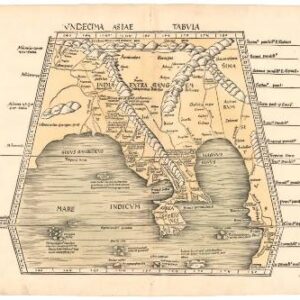
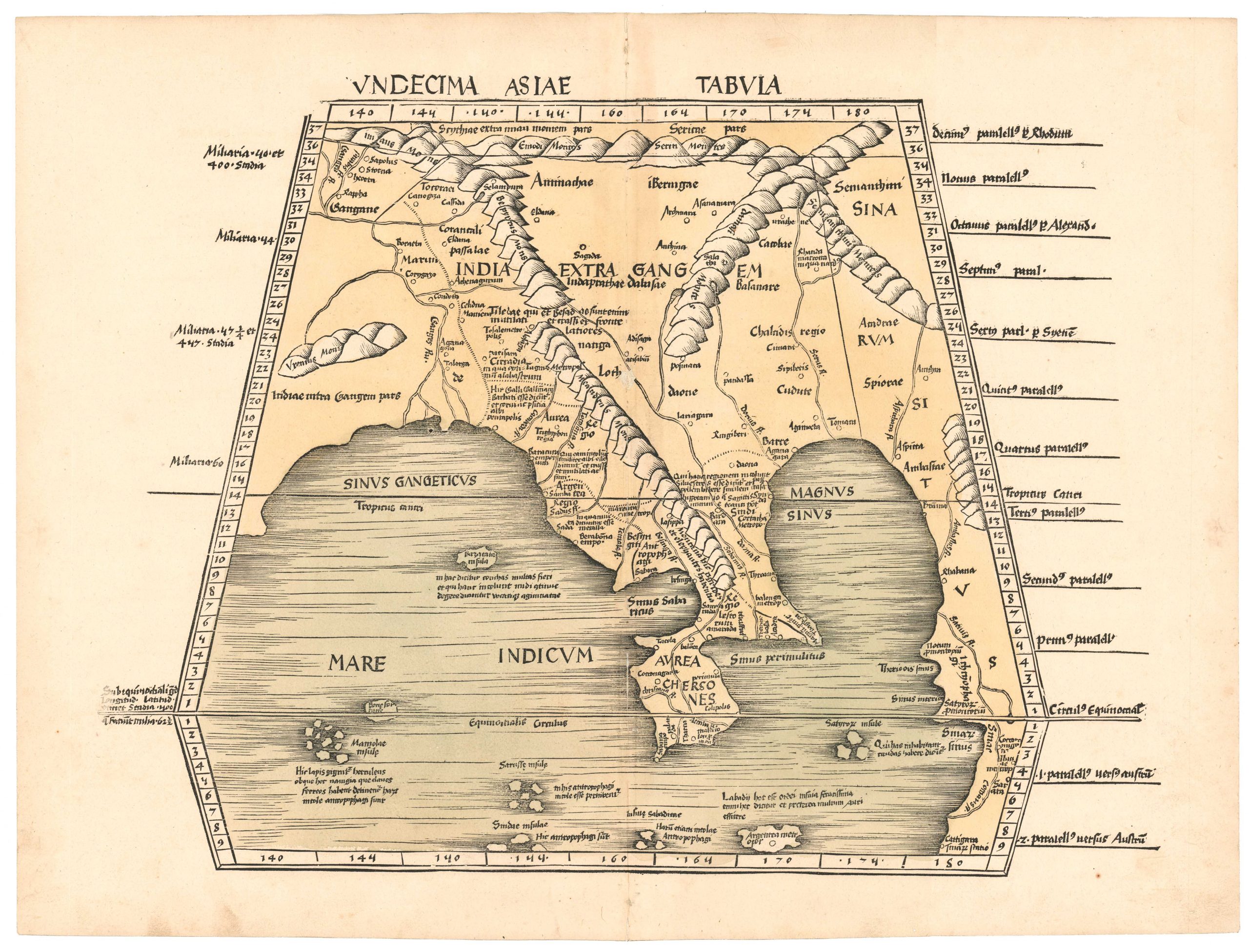
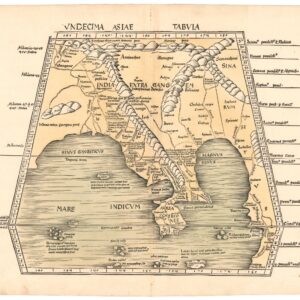
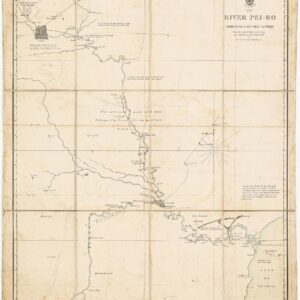
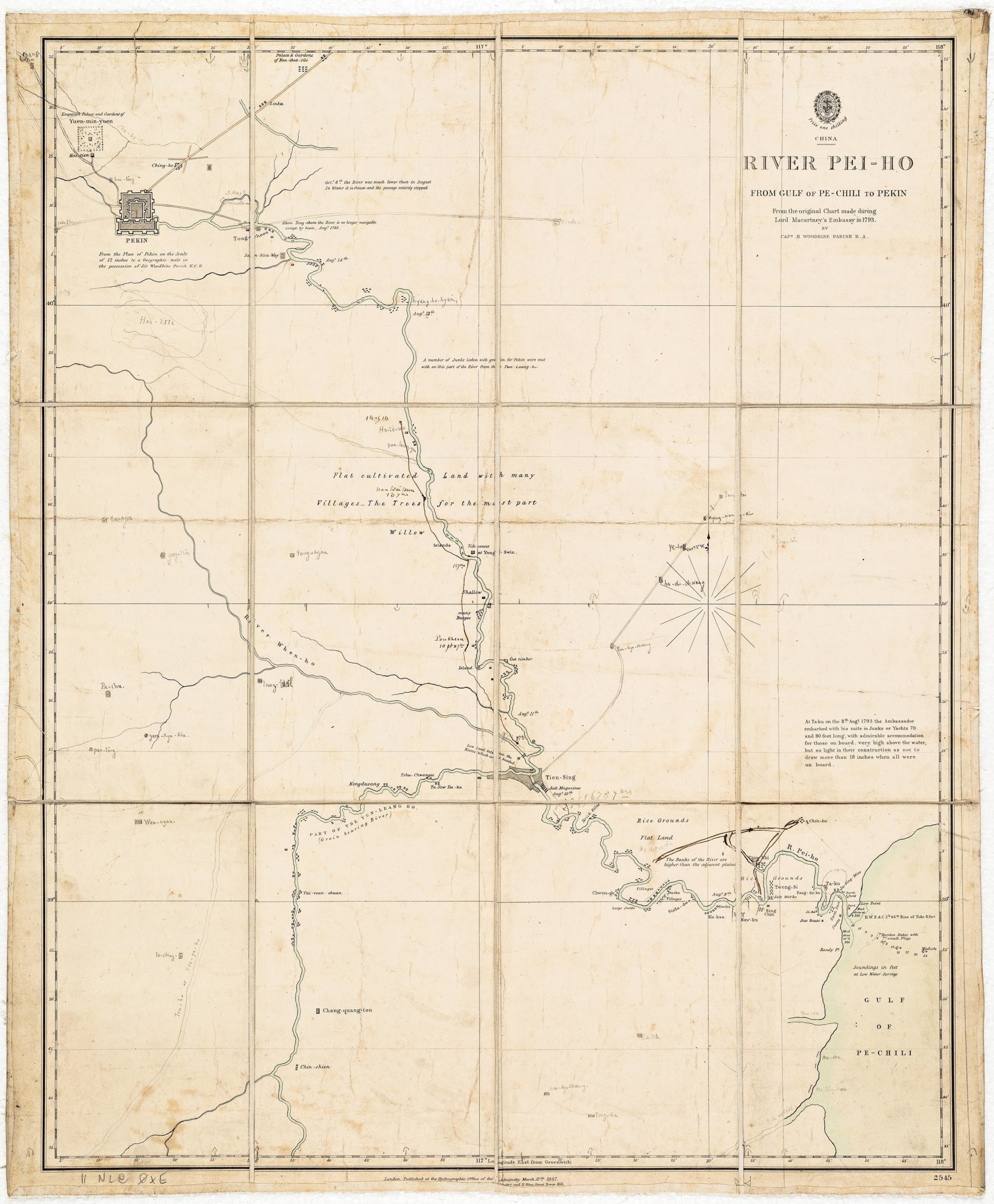
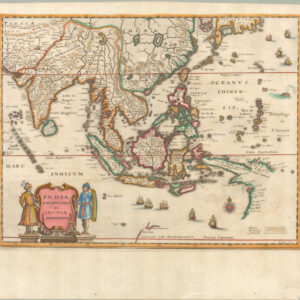
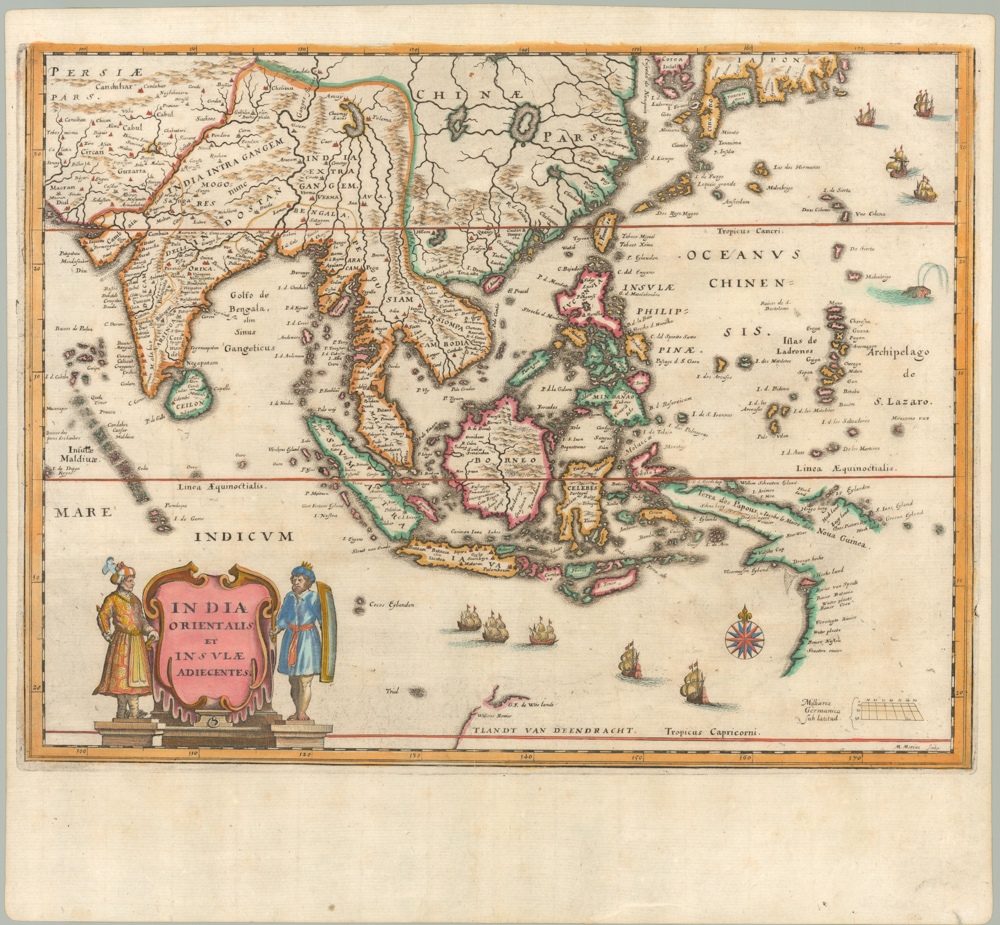
![[Political broadside] Solidarity with the People and Students of the DPR of Korea.](https://neatlinemaps.com/wp-content/uploads/2022/10/NL-01603_thumbnail-1-300x300.jpg)
![[Political broadside] Solidarity with the People and Students of the DPR of Korea.](https://neatlinemaps.com/wp-content/uploads/2022/10/NL-01603_thumbnail-scaled.jpg)
![[Political broadside] Solidarity with the People and Students of the DPR of Korea.](https://neatlinemaps.com/wp-content/uploads/2022/10/NL-01603_thumbnail-scaled-300x300.jpg)